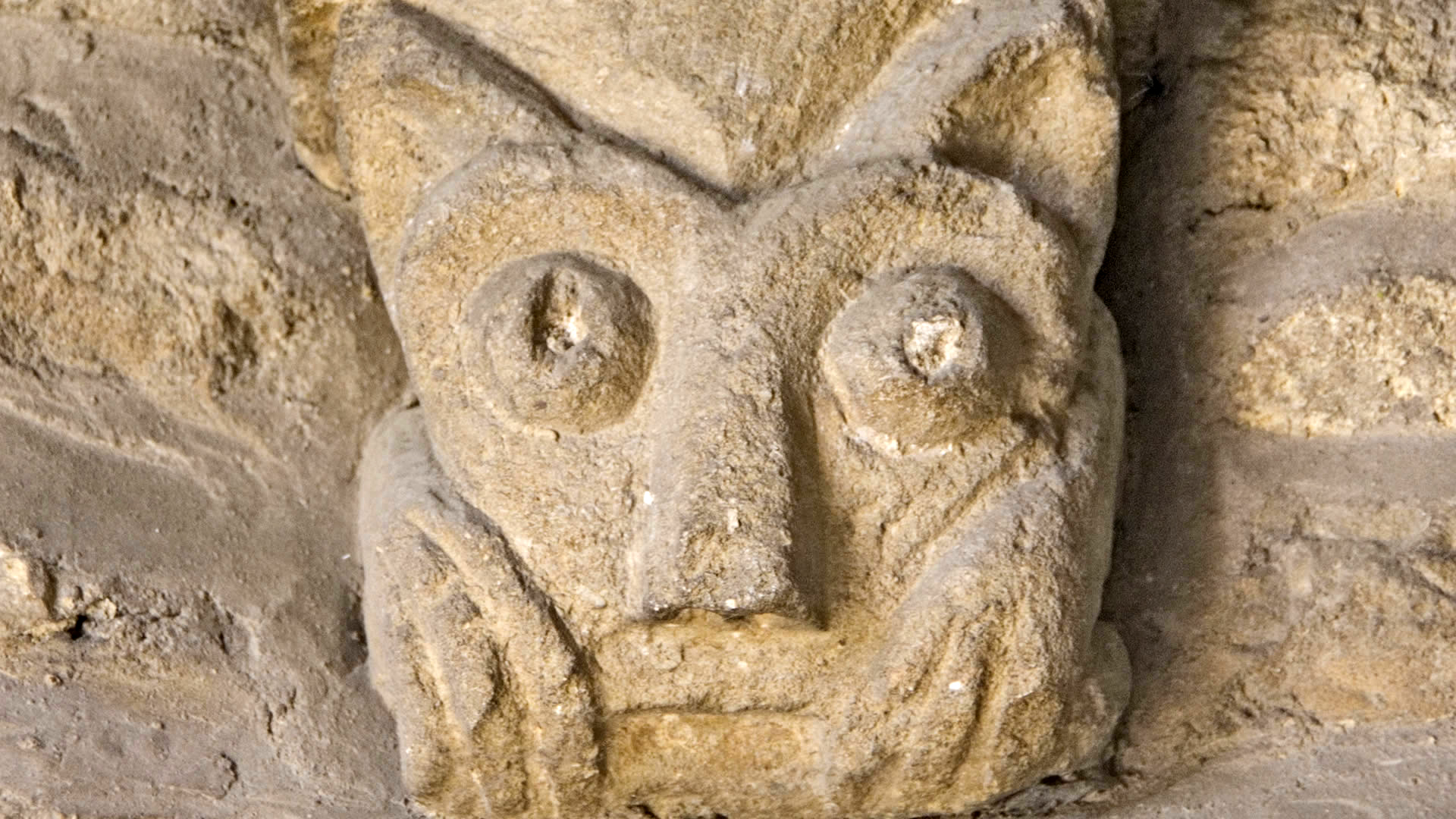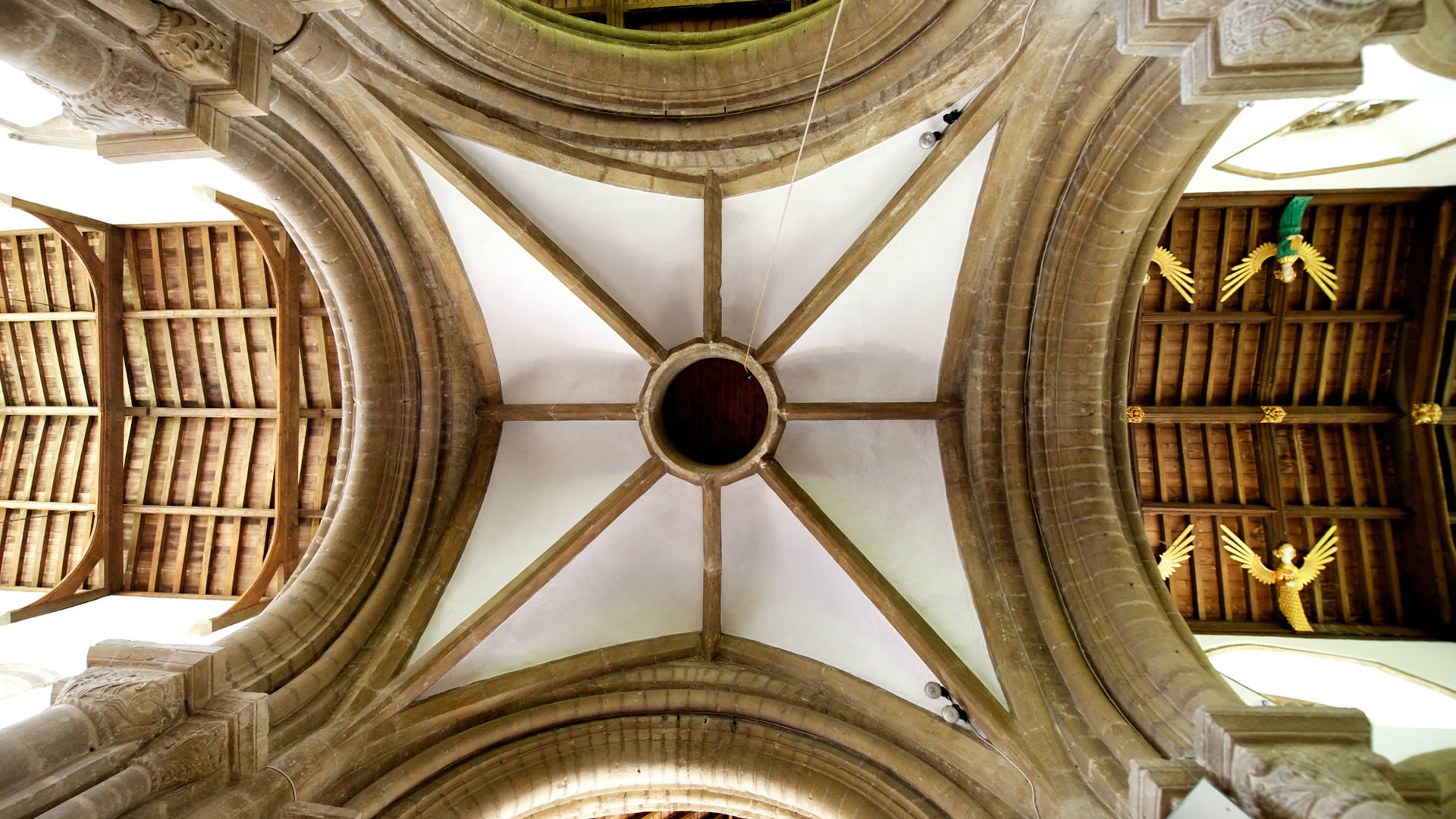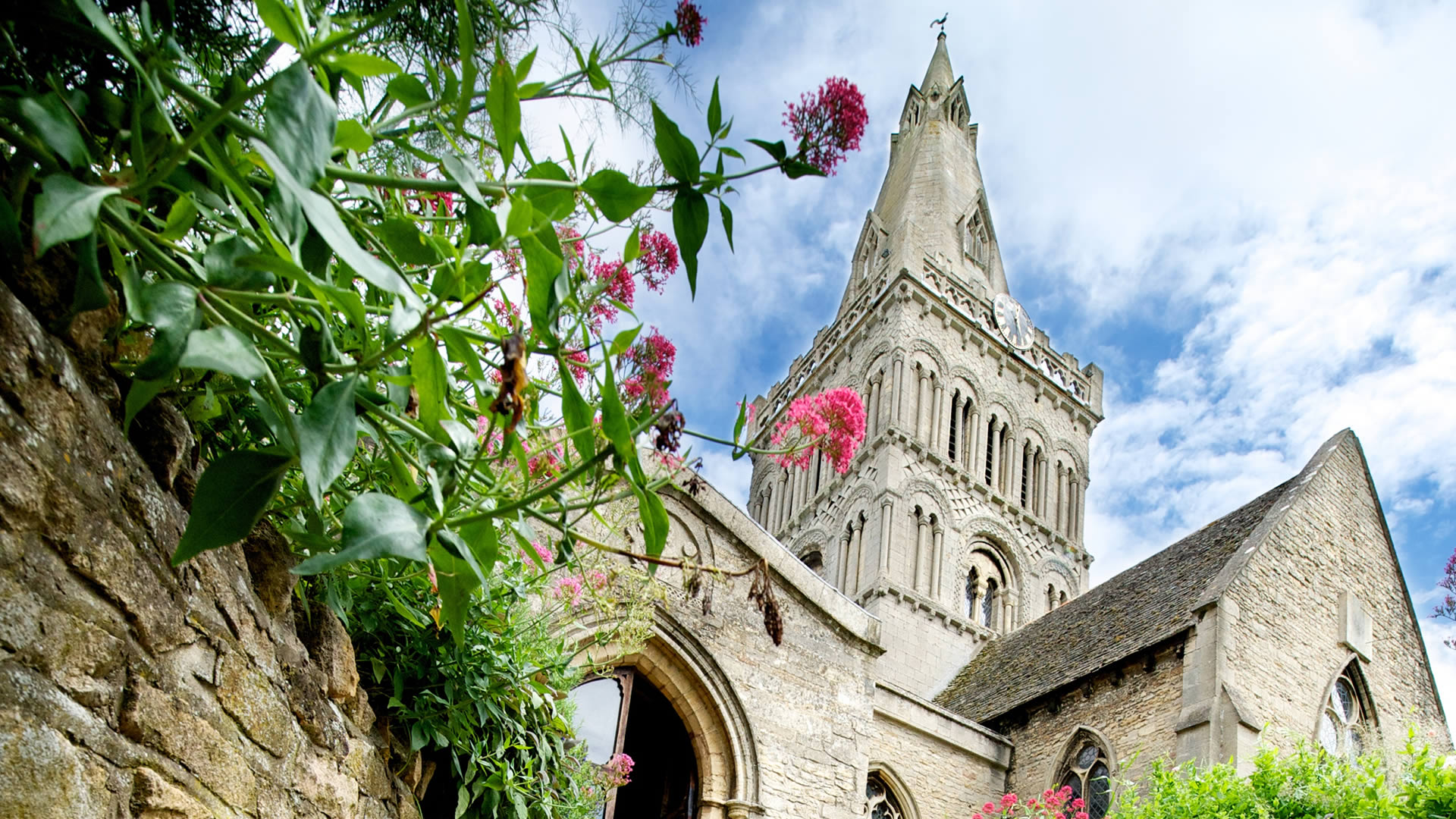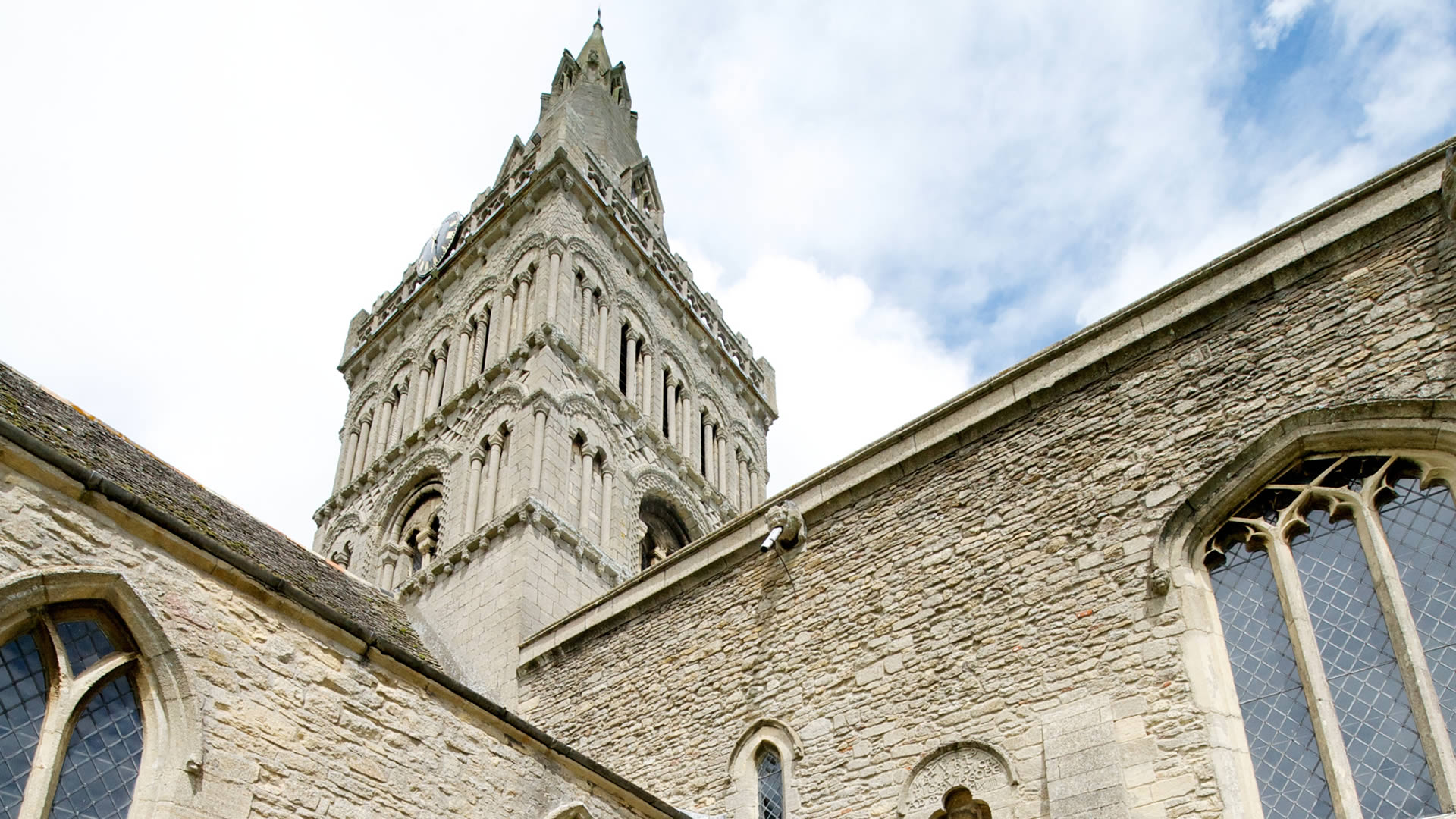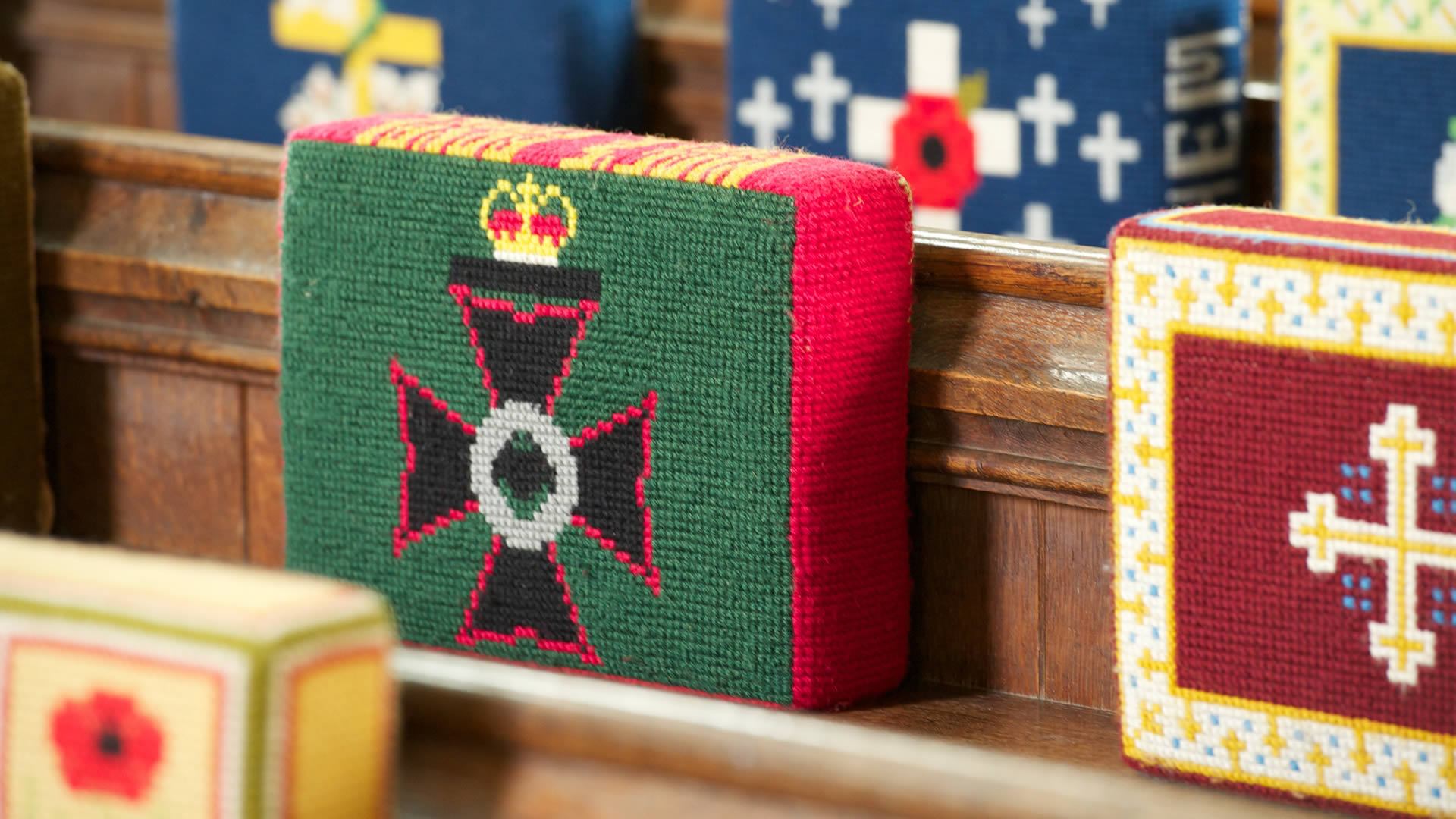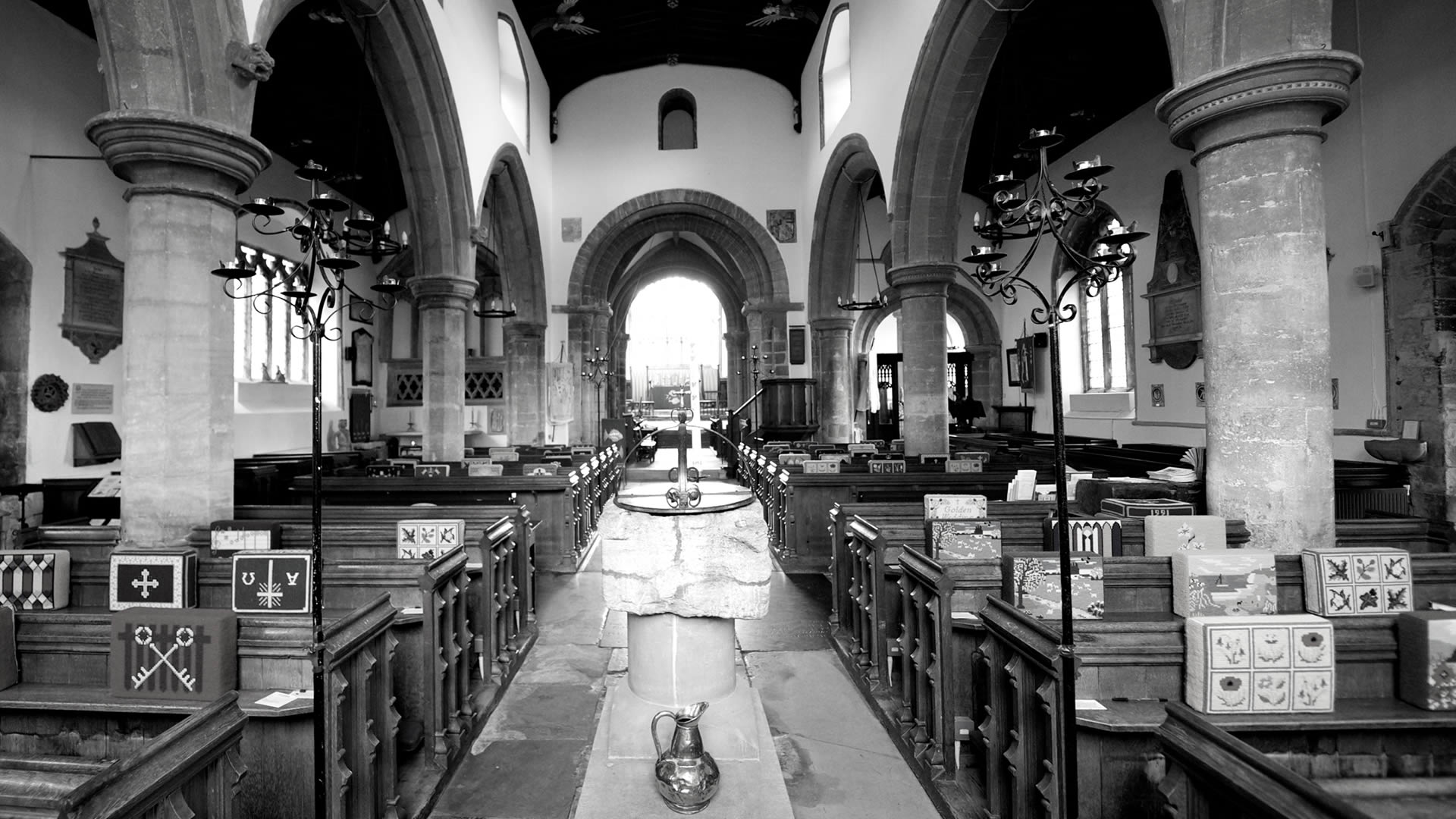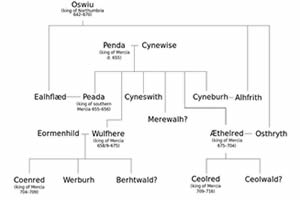 St Kyneburgha in whose name the church is uniquely dedicated and her sister Kyneswitha, were believed to be the daughters of the heathen King Penda of Mercia and his wife Kynewise. Celtic Christianity flourished in Northumbria. Kyneburgha’s brother Peada, later to found Peterborough Abbey, married King Oswy’s daughter Ahlflaed and it was likely that this union depended on Peada’s conversion as a Christian, which subsequently influenced Kyneburgha. About the same time Kyneburgha married Aldfrith son of King Oswy of Christian Northumbria, and sister of Peada’s wife Ahlflaed.
St Kyneburgha in whose name the church is uniquely dedicated and her sister Kyneswitha, were believed to be the daughters of the heathen King Penda of Mercia and his wife Kynewise. Celtic Christianity flourished in Northumbria. Kyneburgha’s brother Peada, later to found Peterborough Abbey, married King Oswy’s daughter Ahlflaed and it was likely that this union depended on Peada’s conversion as a Christian, which subsequently influenced Kyneburgha. About the same time Kyneburgha married Aldfrith son of King Oswy of Christian Northumbria, and sister of Peada’s wife Ahlflaed.
It is thought that Aldfrith may have died in battle at some time and following her husband’s death, Kyneburgha returned to Mercia and established a convent among the ruins of the Roman palace here in Castor. She is thought to have died on the 15th September 680 A.D.
We want to take you back to the 7th Century and constant battling for power and land in what we now know as the Scottish Lowlands and England – then a series of smaller kingdoms.
This journey will take you to the West Midlands, Cumbria – north of Hadrian’s Wall, along the East coast, in Northumberland and eventually down to Castor and Peterborough.
Kyneburgha connects the end of paganism with the spread of Christianity. Her father and brothers dominate Saxon England in the 7th Century and as the most powerful kings of the time, it is very likely that the immense collection of 3,500 items known as the Staffordshire Hoard discovered in 2009 was theirs.
We hope this story will encourage you to visit some new places which have an intimate connection with our own villages.
Kyneburgha started life in Tamworth in the mid 7th century – stronghold of her father, Penda Pagan King of Mercia. Mercia stretched from the Welsh Marches to East Anglia. His son Wulfhere extended the kingdom to be the largest in ‘England’ by the early 8th century. Penda remained resolutely Pagan. whereas all his children converted to Christianity during his lifetime. The Venerable Bede wrote about Penda as a man of principle. Bede was less impressed with Penda’s lifelong enemy, Oswy, King of Northumbria.
Click here for the Visit Tamworth website
The castle at Tamworth is a Norman construction and is likely to be on the site of Penda’s stronghold. He is likely to have had a number of strongholds across his kingdom. Expert opinion says that the Staffordshire Hoard was probably Penda and Wulfhere’s property. Click here for more info on the Hoard
 Early Saxon Christianity:
Early Saxon Christianity: By 654, a marriage was being negotiated between Peada, son of Penda, and Alhflaed, daughter of Northumbrian King Oswy. The Northumbrian king stipulated that first Peada must accept Christianity, which he was prepared to do whether he won the hand of the maiden or not and was baptized by Finan, the Celtic Bishop of Lindisfarne.
The royal couple returned to Mercia and may have taken up residence on the site of the huge but derelict Roman Praetorium on the terrace at Castor. Peada had already been appointed by his father as sub-king of the Middle Angles, whose province covered Northamptonshire and Leicestershire.
Peada’s sisters, Kyneburgha and Kyneswitha came south too and established a convent here in Castor in the Celtic tradition but possibly on the site where Romano-British people worshipped to the Roman tradition. (Right: Saxon carving likely to be from Kyneswitha’s tomb)
